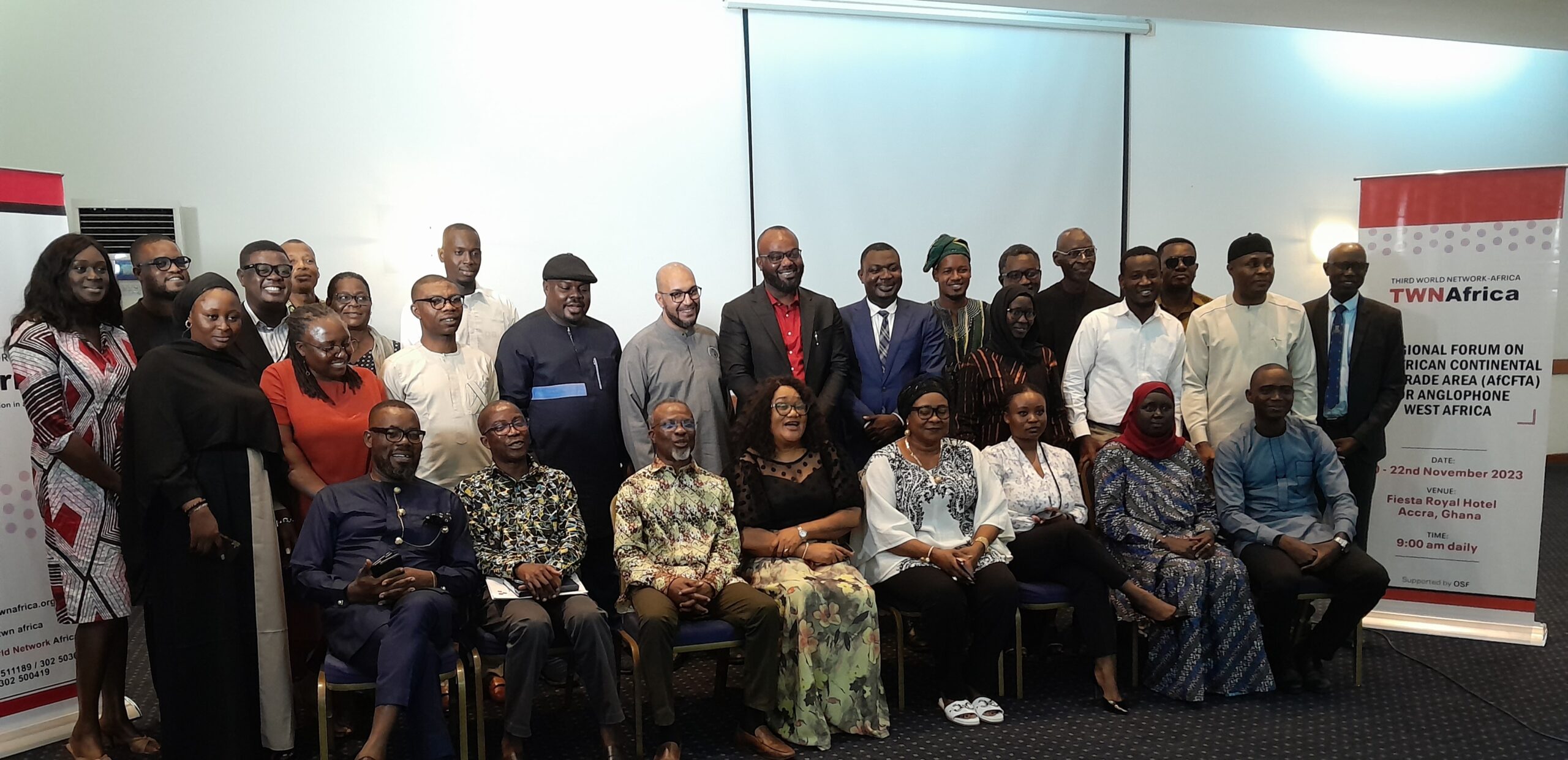
Accra, Ghana//-Dr Talkmore Chidede, Digital Trade Expert at the African Continental Free Trade Africa (AfCFTA ) Secretariat in Accra, Ghana, and the Programs Officer for Trade at Third World Network-Africa (TWN-Africa), Sylvester Bagooro, have cautioned African governments, businesses and individuals not to underlook the power of the Internet in driving Africa’s digital economy.
According to them, businesses-small, medium, and large could facilitate trade across thousands of kilometres in Africa and beyond if there was availability of the Internet.
They gave the caution on the second day of the three-day regional multi-stakeholders forum on AfCFTA organised by TWN-Africa for Anglophone West Africa.
The reality
Around four out of 10 people in Africa had internet access in December 2021. The online penetration rate on the continent was below the global average, measured at around 68 per cent, according to Statista.
It, however, stated that the number of internet users in Africa increased to nearly 602 million in 2022, six times more than in 2010. By 2025, the figure might come close to 700 million, Statista predicted.
Giving an overview of Digital Trade in the AfCFTA, Dr Chidede underscored the importance of the Internet in oiling the continent’s economy.
Digital trade negotiations Phase II negotiations
He explained that Article 8(3) of the AfCFTA Agreement provides that any additional instrument deemed necessary “shall be concluded in furtherance of the objectives of the AfCFTA and shall, upon adoption, form an integral part of this Agreement.
Dr Chidede revealed that the deadline for digital trade negotiations phase II negotiations had been met in July 2023.
On work by the Committee on Digital Trade, he noted that four meetings were held between 2022 and October 2023.
The first Meeting of the Committee which was held in December 2022 focused on Terms of Reference and Guidelines and Principles for Negotiating the Protocol on Digital Trade.
It also determined and identified the key elements of the Protocol on Digital Trade, and considered the Report of the Regional Stakeholder Consultations; among others.
The second Meeting of the Committee (February 2023) read and considered the Zero Draft AfCFTA Protocol on Digital Trade involving State and non-state Parties.
Digital trade protocol’s relationship with other AfCFTA protocols
Digital trade cuts across other disciplines including trade in services, trade in goods, trade facilitation, IPRs, investment, competition policy and women and youth in trade, the expert said.
These disciplines are dealt with in specific legal instruments of the AfCFTA. These legal instruments, including the Protocol on Digital Trade, form an integral part of the AfCFTA Agreement, Dr Chidede
Draft Protocol clarifies what happens if any conflict or inconsistency between the Protocol on Digital Trade and any other legal instrument of the AfCFTA.
Protocol does not derogate or modify the rights and obligations of the State Parties under the other Protocols to the Agreement, according to him.
Digital trade inclusion
The main objective is to bridge the digital divide between advanced and less advanced countries, big and small businesses, rural and urban communities, and different groups.
Digital Inclusion – tackling barriers to the participation of women, youth, persons with disabilities and rural communities, among other underserved groups, in the digital trade and digital economy.
He observed that Micro, Small and Medium Enterprises find it difficult to participate in mainstream cross-border trade.
“African small businesses are disproportionately affected by obstacles to cross-border trade. Digital trade provides a platform where both small and large businesses can compete on a level playing field.
Setting the context
Setting the context for the discussion at the forum held in Accra, Mr Bagooro said:
“The digital economy is evolving at breakneck speed, driven by the ability to collect, use and analyse massive amounts of machine-readable information (digital data).
These digital data arise from the digital footprints of personal, social, and business activities taking place on various digital platforms, he added.
But there are huge divides. Two countries the United States and China. For most least developed countries (LDCs), they lag, Mr Bagooro indicated.
“Unlike most developed economies, only 20 per cent of people in least developed countries (LDCs) use the Internet.
Within countries, there are significant divides between rural and urban areas, as well as between men and women. The largest gender divides are observed among LDCs and in the African region”.
A digital economy is built on digital infrastructure and digital capabilities. Three broad interrelated components of digital infrastructure which can be identified are networks, software and data; and digital capabilities for better results.


